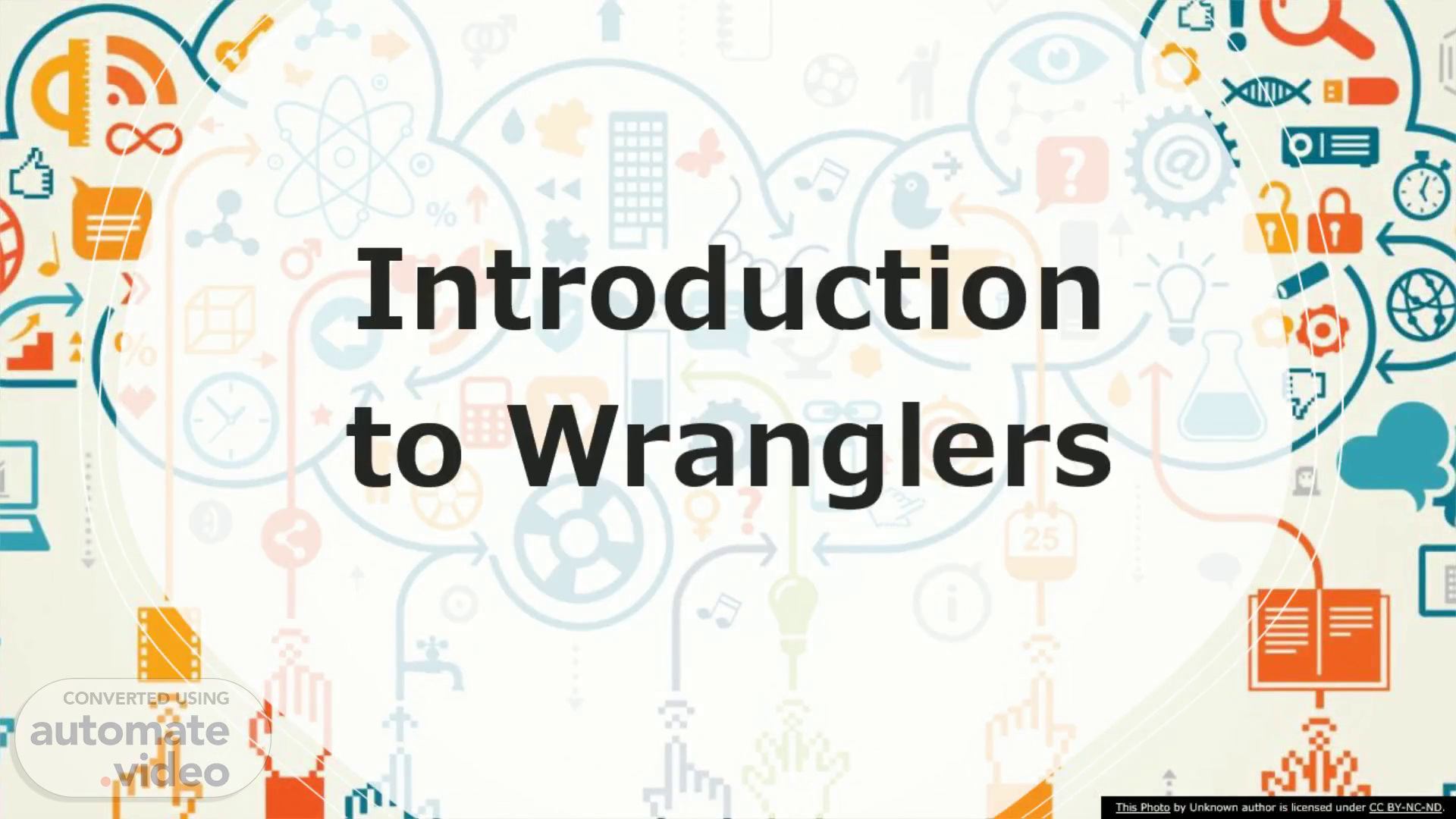
Introduction to Wranglers
Scene 1 (0s)
[Audio] Hello Everyone, Welcome to today's session where I will be explaining about the topic Data Wrangling; What it is, benefits of its usage, how it can be implemented. So, Stay Tuned and Happy Learning!.
Scene 2 (16s)
[Audio] Data wrangling can be defined as the process of transforming raw data into formats that are easier to use. Wrangling tasks mainly includes, Merging multiple datasets into one large dataset for analysis purpose. It can also be utilized for examining missing values present in the data. It is also useful in removing outliers or anomalies found in the dataset. Furthermore, it can also be helpful to standardize inputs..
Scene 3 (48s)
[Audio] Data wrangling is required to create a transparent and efficient system for data management, the best solution is to have all data in a centralized location so it can be used. Depending upon the data resources and its format, data gathering can have various steps. If data is in a file, then gathering of data comprises of downloading the file and reading it into your project. Another way could be by collecting data from databases, scraping the data from a website, or gather it with the help of API. API stands for Application Programming Interface, which helps you to get the data from applications like Twitter, Facebook, Foursquare, and so on. Furthermore, data can also be collected through experiments and data loggers. Assessment of data is about checking how messy your data is. Things to be checked in data assessment involves, duplicate rows, missing values, Incorrect data types, data clusters, unwanted columns and Inconsistent units. Data cleaning step is always focused on solving the quality and tidiness issues found in the data assessment stage. Depending on the problem and data type, different data cleaning techniques are implemented..
Scene 4 (2m 8s)
[Audio] Data Wrangling can be beneficial as it helps to improve Data Usability by converting data into a format that is compatible with the end system. It aids in the quick and easy creation of data flows in an Intuitive User Interface where the data flow process can be easily scheduled and automated. Data Wrangling also integrates Different Types of Information, as well as the sources, such as databases, files, web services, etc. Data wrangling allows users to process Massive Volumes of Data and share data flow techniques easily. Reduces Variable Expenses related to using external APIs or paying for software platforms that aren't considered business-critical..
Scene 5 (2m 55s)
[Audio] The first step in data wrangling is analyzing the data before imputing the data. Wrangling needs to be done in a systematic fashion, based on some criteria which could demarcate and divide the data accordingly. The data should be restructured in a fashion that better suits the analytical method used. Based on the category identified in the first step, the data should be segregated to make use easier. Processed datasets definitely have some outliers, which can skew the results of the analysis. The dataset should be cleaned for optimum results. Data cleaning cleans the data thoroughly for high-quality data analysis. Null values needs to be imputed, and the formatting to be standardized in order to create higher quality processed data. After being done with the processing, the data needs to be enriched. There are different ways to resample the data, one down sampling the data, and the other creating synthetic data using up sampling. The fifth step, validation refers to iterative programming steps that are used to verify the consistency and the quality of data after processing. For example, you will have to ascertain whether the fields in the data set are accurate via validating data, or checking whether the attributes are normally distributed. Last step refers to publishing of processed and wrangled data so that it can be used further – which is the sole purpose of data wrangling..
Scene 6 (4m 29s)
[Audio] The basic wrangling tools involves the following Excel power query or spreadsheets, is the basic manual structure wrangling tool. Open Refine provides more sophisticated solutions and also requires programming skills. Google Data Prep is mainly for data exploration, cleaning and feature engineering. Tool Tabula is suitable for all kinds of data. Data Wrangler used for data cleaning and transformation. CSV Kit is mainly implemented for converting data..
Scene 7 (5m 6s)
[Audio] Data Wrangling can be implemented using R, built as a free software for statistical computing and graphics. R is both, a language and environment for data wrangling, modeling, and visualization. The R environment provides a suite of software packages while R language integrates a series of statistical, clustering, classification, analysis, and graphical techniques that help manipulate data. Dplyr is a necessary data-munging R package, Especially useful for operating on categorical data. Purrr is appropriate for creating list function operations and error checking. Split stack shape is great for restructuring complex datasets and simplifying the visualization. JS Online is an easy parsing tool. Magrittr on the other hand is good for wrangling scattered datasets and putting them into a more coherent form. Data wrangling is a huge necessity in recent times because of the huge amounts of data that gets processed every day making user services more efficient. Hope this session helped you understand the concept of Data wrangling better. Thank you!.